.
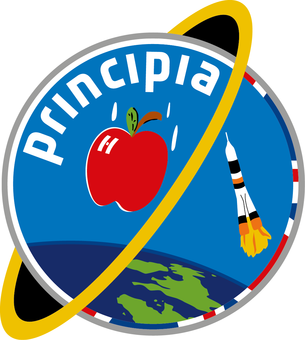
After a daunting process of elimination, a logo has been chosen for ESA astronaut Tim Peake’s Principia mission to the International Space Station in 2015.
The BBC’s Blue Peter programme asked schoolchildren to design a mission patch for Tim and received more than 3000 entries.
The winning entry is by 13-year-old Troy, who explains: “Principia refers to Isaac Newton’s principal laws of gravity and motion so I drew an apple because that is how he discovered gravity.
“Plus Tim Peake is promoting healthy eating as part of his mission and apples are healthy.” Fittingly, a stylised Space Station glints in the apple.
The Soyuz rocket taking Tim into space flies over the UK as the colours of the Union Flag run along the border.
.
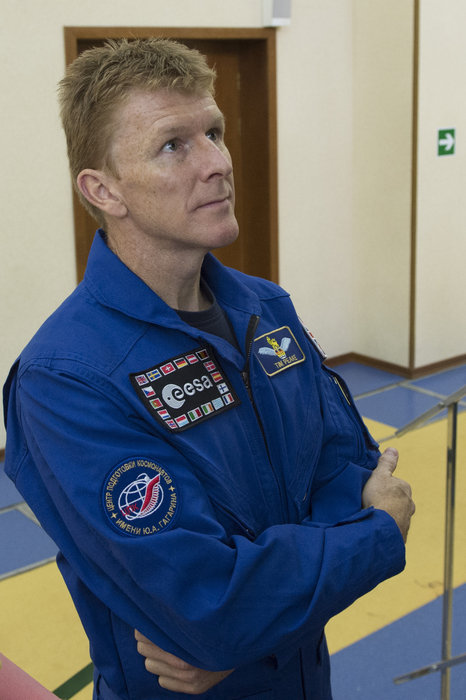
ESA Astronaut Tim Peake
.
Process of elimination
Each ESA astronaut has a mission name and patch, often chosen in a competition held in the astronaut’s home country. In Tim’s case, the entries were reduced to 33 candidates for presentation to an expert panel of judges.
The judges from ESA, Blue Peter and the UK Space Agency together chose their two favourites in each of the three age groups of 6–8, 9–11 and 12–15 years to ensure a fair chance for all applicants.
Trees, apples, spaceships and the UK were common elements but ESA graphic designer Karen Oldenburg was impressed by the variety: “The entries were amazingly diverse. It was obvious that each child had put a lot of individuality and inventiveness into each design.”
Important considerations for deciding on the final six were how a design would look as a patch, the colours used and whether the children drew everything on their own.
.
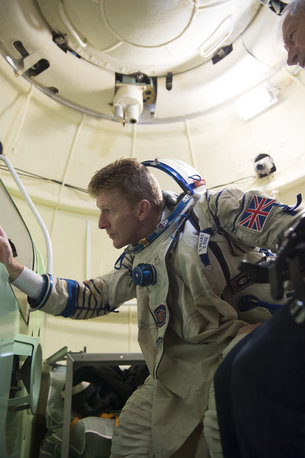
Training in Russia
The final decision came down to Tim himself. He had a hard time choosing: “I have been so impressed with the high standard and the number of entries. Wonderful!
“My final choice was not easy to make, but I chose Troy’s design because his patch was simple but included many references to my mission.”
Troy will see his Principia patch flown to space and was invited to the Blue Peter television studios for the unveiling.
Ewan Vinnicombe, Blue Peter Editor, said, “It’s been fantastic to see all the thousands of colourful and creative entries we received for this Blue Peter competition.
“I was so impressed with them all and the winning design looks amazing. I can’t wait to see it in space.”
The five runners-up will receive their artwork framed with a signed photo from Tim.
.
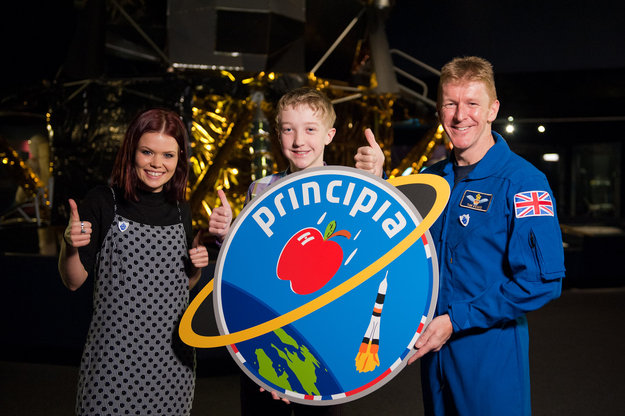
Presenter Lindsay Russell, Troy and Tim with Principia logo
----
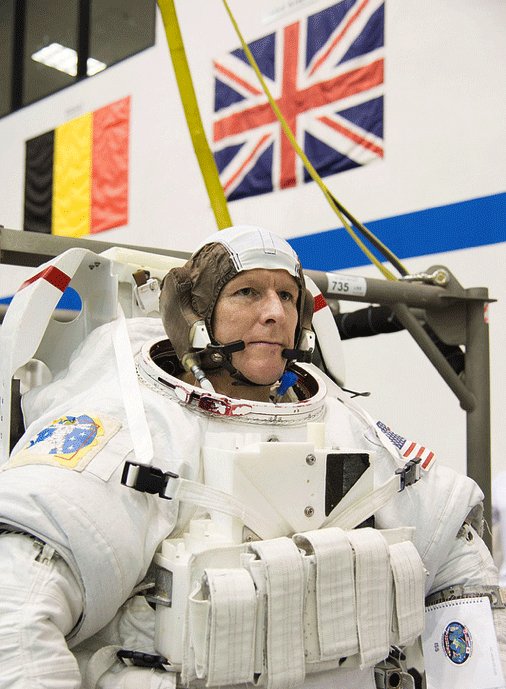
Personal data
Born in Chichester, England, on 7 April 1972, Tim is married with two sons. Among his leisure activities he enjoys skiing, scuba diving, cross-country running, climbing, and mountaineering in his wife’s native Scotland. He has also completed the London Marathon. Other interests include quantum physics and aviation.
Education
Tim completed his secondary education at Chichester High School for Boys in West Sussex, England, in 1990. In 1992, he graduated from the Royal Military Academy Sandhurst as an officer in the British Army Air Corps. Having been selected for the Empire Test Pilots’ School at Boscombe Down, he graduated in 2005 and was awarded the Westland Trophy for the best rotary wing pilot student. He received a Bachelor of Science degree in flight dynamics and evaluation from the University of Portsmouth in 2006.
Special Honours
Tim was awarded the Commander-in-Chief’s Certificate for Meritorious Service for exemplary and dedicated service to the British Army in 2006.
Organisations
Fellow of the Royal Aeronautical Society
Member of the Society of Experimental Test Pilots.
Experience
At school, Tim was a member of the Combined Cadet Force for six years, finishing as Cadet Warrant Officer. Before joining the Army he was part of a six-month Operation Raleigh expedition to Alaska to work on environmental projects.
Upon becoming an Army Air Corps officer in 1992, Tim served on attachment with the Royal Green Jackets as a Platoon Commander in Northern Ireland, before beginning flight training. He was awarded his Army Flying Wings in 1994.
Between 1994 and 1998 he served as a reconnaissance pilot and flight commander in Germany, the Former Republic of Yugoslavia, Northern Ireland, Kenya and Canada. He also qualified as a Combat Survival and Rescue Instructor, and a Flight Safety Officer.
Tim qualified as a helicopter flying instructor in 1998 before being selected for an exchange posting with the US Army flying Apache helicopters with the 1st Cavalry at Fort Hood, Texas (1999–2002). On his return to the UK, he became an Apache helicopter instructor from 2002 to 2005, during which time he was instrumental in introducing the Apache into service with the British Army.
On completion of test pilot training, Tim served with Rotary Wing Test Squadron, Boscombe Down, between 2006 and 2009. He was the senior Apache test pilot in addition to being test pilot for Special Forces aircraft projects. He was also the Squadron Training Officer and qualified as a Post Crash Management Incident Officer.
On retirement from the British Army as a major in 2009, Tim was employed as a senior helicopter test pilot for AgustaWestland, flying Apache, Lynx, EH101 and A109 aircraft. During his career, he has logged over 3000 hours’ flying time on more than 30 types of helicopter and fixed wing aircraft, including the Hawk, Dakota, Harvard and Mi-17. He maintains his flying as a major in the Territorial Army, and also holds a private pilot’s licence.
Tim was selected as an ESA astronaut in May 2009. He joined ESA in September 2009 and completed Astronaut Basic Training in November 2010. He received Eurocom certification in September 2011, which allows him to be responsible for communication between astronauts in orbit and Europe’s Mission Control Centre.
With five other astronauts, he joined a 2011 mission as part of an international team living underground for a week and exploring a cave system in Sardinia, with the focus on human behaviour and performance in extreme environments.
In June 2012, Tim spent 12 days in the Aquarius habitat 20 m below the sea off the coast of Florida for NASA’s Extreme Environment Mission Operations, or NEEMO. NEEMO allows space agencies to test technologies and conduct research for future missions. Tim’s NEEMO 16 mission focused on developing the tools, techniques and procedures required for a crewed mission to an asteroid.
In 2012 Tim completed training and certification for spacewalks using both the Russian Orlan spacesuit and the US Extravehicular Mobility Unit.
He was appointed an ambassador for UK Science and space-based careers in 2009 and is involved in working with the UK Space Agency in developing the UK’s microgravity research programme. He is keenly interested in promoting science and engineering as career possibilities for school pupils and students.
Current assignment
Tim is based at ESA’s European Astronaut Centre in Cologne, Germany. He is currently training for his long-duration mission to the International Space Station, to be launched at the end of November 2015. He will be the first British ESA astronaut to visit the Space Station. Until his assignment was announced in 2013, Tim was Lead Eurocom for Luca Parmitano’s six-month Volare mission that started in May of that year.
----
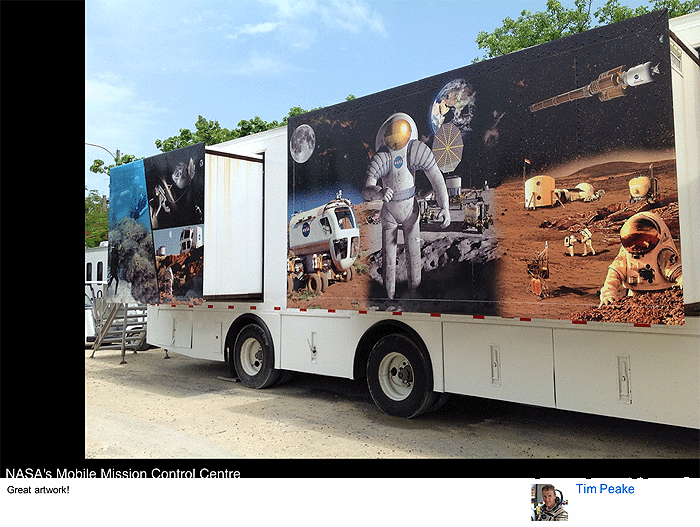
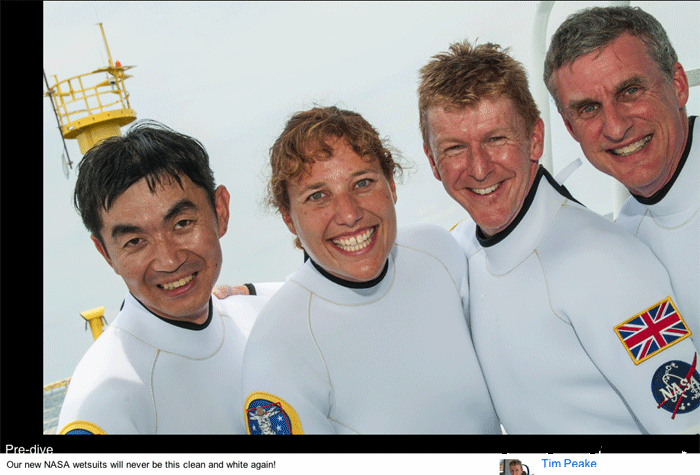
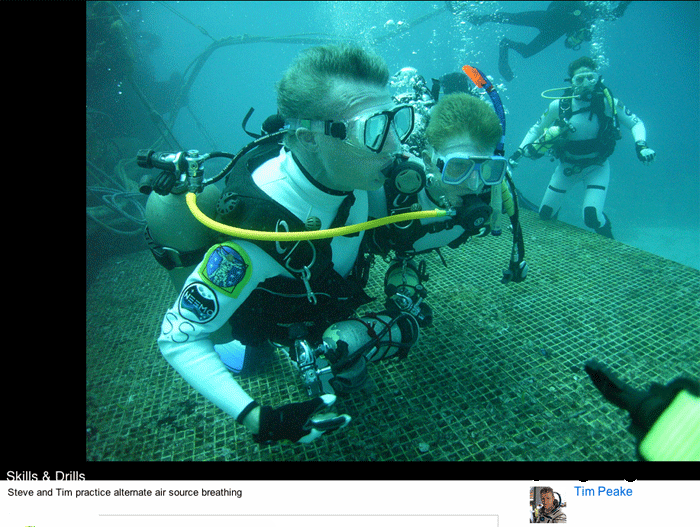
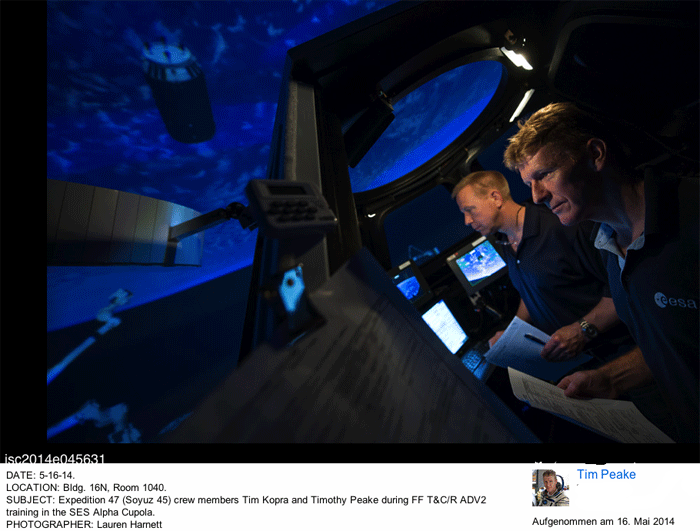
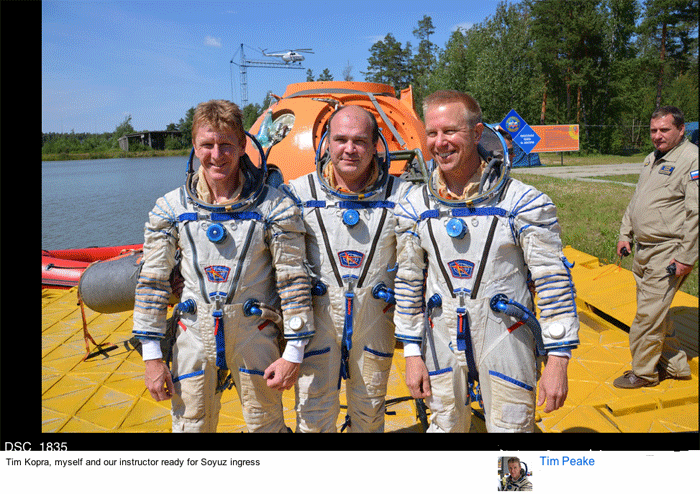
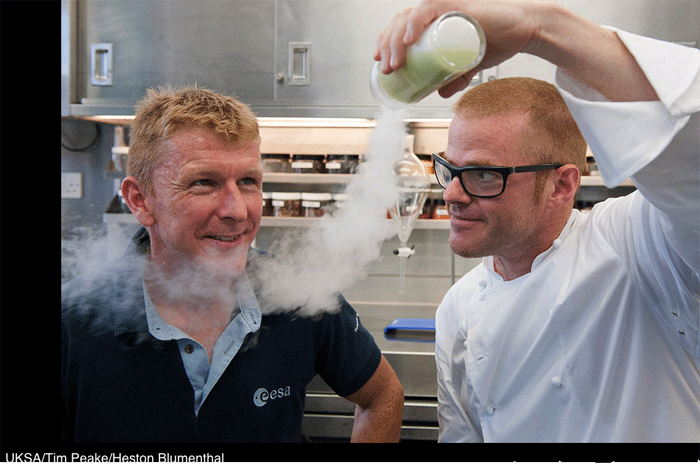
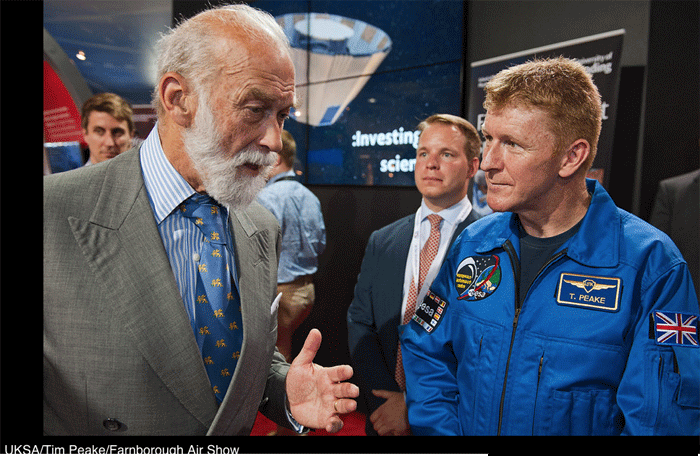
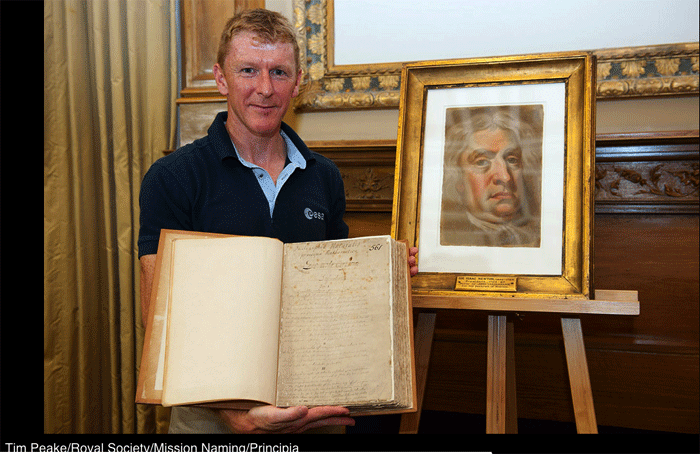
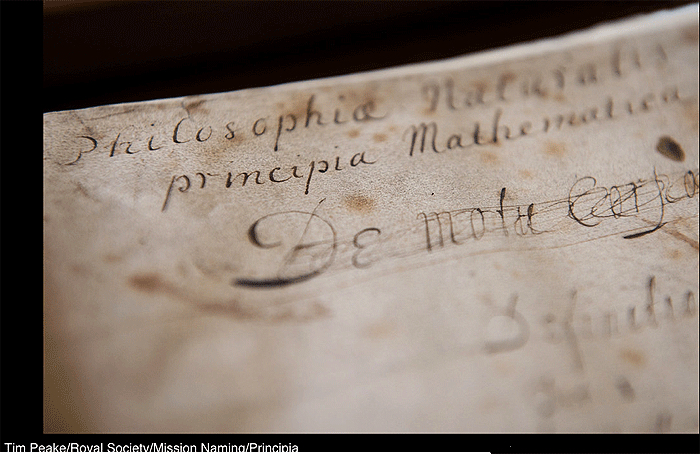
Quelle: ESA
.
Update: 11.01.2015
.
ESA astronaut Tim Peake is training for his Principia mission to the International Space Station. He will join the crew of Expedition 46/47 for six months in space in 2015. Tim will be the first British citizen to live and work on the Space Station and it will be the eighth long-duration mission for an ESA astronaut.
Tim will be launched from Russia’s Baikonur cosmodrome in Kazakhstan in November 2015 on a Soyuz spacecraft. These images are from a training session near Moscow, Russia, in a Soyuz simulator.
.
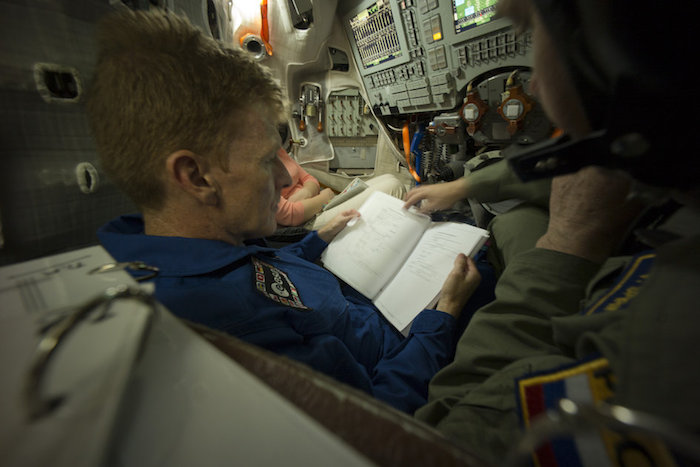
.
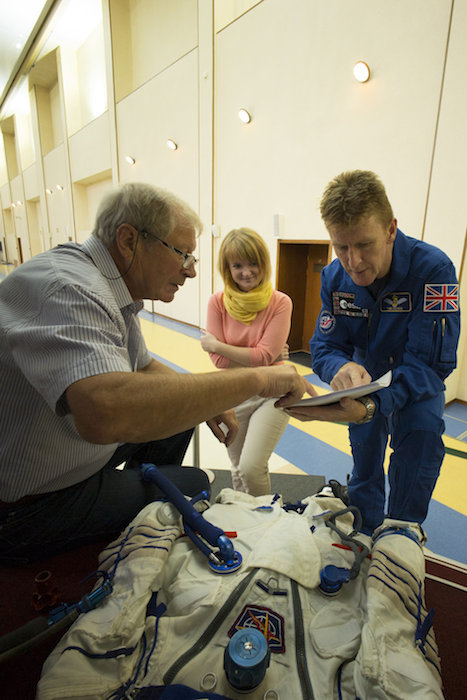
.
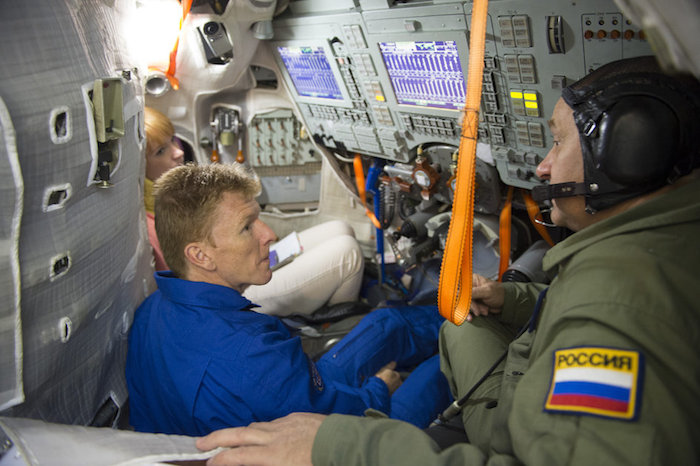
.
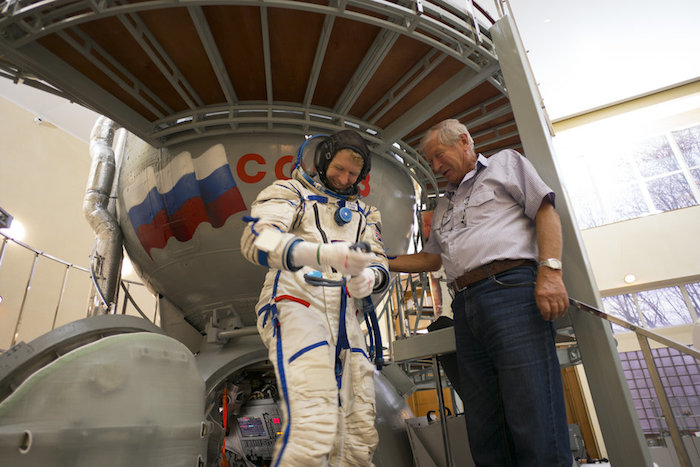
.
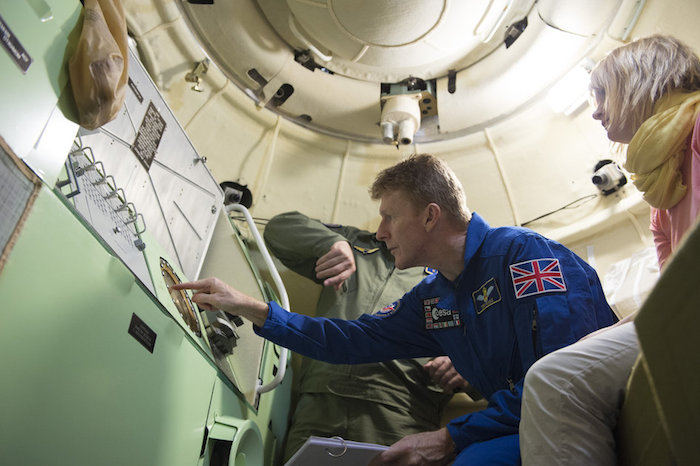
.
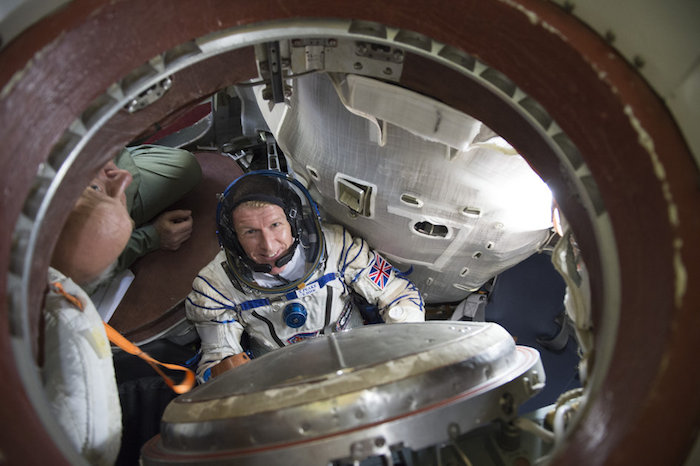
Quelle: ESA-GB
.
Update: 23.05.2015
.
ROCKET SCIENCE: ESA at the Chelsea Flower Show
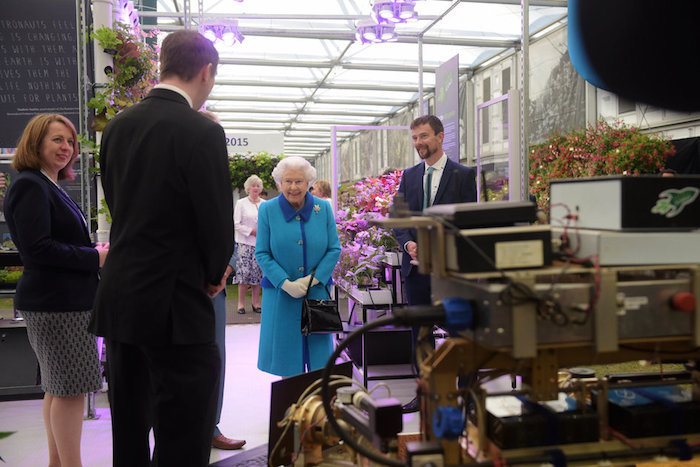
In collaboration with ESA, the UK’s Royal Horticultural Society Campaign for School Gardening and the UK Space Agency launched an ‘out-of-this-world’ educational project at the Chelsea Flower Show this week.
Called Rocket Science, this project will see 2 kg of seeds of a variety of rocket salad sent to the International Space Station as part of ESA astronaut Tim Peake’s six-month Principia mission.
After several months in space, the seeds will be returned to Earth and sent to thousands of UK schools, together with a batch of seeds that stayed on Earth. Pupils will grow and compare the seeds to see whether space travel has an impact on the growth of the seeds. The results of the nationwide science experiment will be analysed to help find out if we can sustain human life in space by producing our own food.
.
In collaboration with ESA, the UK’s Royal Horticultural Society Campaign for School Gardening and the UK Space Agency launched an ‘out-of-this-world’ educational project today at the Chelsea Flower Show.
Called Rocket Science, this project will see 2 kg of seeds of a variety of rocket salad sent to the International Space Station as part of ESA astronaut Tim Peake’s six-month Principia mission.
After several months in space, orbiting the planet at 17 000 mph (26 000 km/h), the seeds will be returned to Earth and sent to thousands of UK schools, together with a batch of seeds that stayed on Earth. Pupils will grow and compare the seeds to see whether space travel has an impact on the growth of the seeds. The results of the nationwide science experiment will be analysed to help find out if we can sustain human life in space by producing our own food.
British ESA astronaut Tim Peake said: “It’s a huge privilege to be the first British ESA astronaut flying to the International Space Station. During my six-month tour, I’ll be conducting a number of experiments on the International Space Station. I hope that the Rocket Science experiment will inspire the next generation to think scientifically, and to consider fulfilling careers in science, technology, engineering and mathematics.”
To introduce the project, an inspiring exhibition is on show in the Discovery Zone at this year’s Royal Horticultural Society Chelsea Flower Show, complete with a real-life Mars Rover and ESA scientists on hand to talk about their work in this field. Set across four zones, interactive displays will show past, present and future plants in space, explaining the important role scientists play in helping plants grow in inhospitable conditions. The exhibit will show how space exploration helps solve problems on Earth and even the plants astronauts need to survive long-duration missions.
During a visit to the exhibition, the UK Minister for Universities and Science Jo Johnson said: “Britain’s space industry is going from strength to strength, and for this to continue it is right we inspire the next generation of scientists and engineers. Rocket Science is doing just that by giving thousands of schoolchildren the opportunity to play a part in Tim’s mission to the International Space Station, while learning new skills in a fun and unique way.”
Quelle: ESA
-
Update: 21.06.2015
.
Britain's first official astronaut to enjoy fine dining on space mission
Major Tim Peake will be eating meals inspired by Heston Blumenthal and British schoolchildren during his six month mission the International Space Station
Russian cosmonauts insist on tubes of space vodka, while the Chinese have invented a way to freeze dry sushi for their space missions.
But when Britain’s first official astronaut Major Tim Peake reaches the International Space Station in December he will become the first to enjoy Michelin-starred fare in microgravity.
• Italian astronaut brews the worlds first espresso in space
While most astronauts make do with irradiated beef steak or waffles which have been ‘specially formulated’ to have a shelf life of 18 months, Peake will be embarking on six months of interstellar fine-dining courtesy of Heston Blumenthal.
The first course of Blumenthal’s space food blasts off on a supply rocket in the next few weeks to await the arrival of Peake who is currently undergoing extensive tests in at Houston ahead of the mission.
.
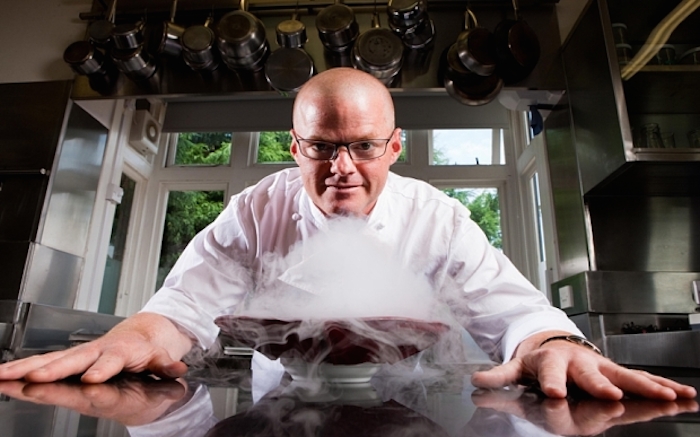
Chef Heston Blumenthal has created dishes for Tim Peake to enjoy in space
.
It has been created with the help of British schoolchildren who suggested a ‘rocket lolly’ consisting of a three course meal of tomato soup, curry and Eton mess; beef stew with asteroid dumplings and chocolate mousse with space dust popping candy. Also on the menu for The Great British Space Dinner is a Sunday roast in a helmet-shaped pie and a dessert of bite-sized treats in the shape of planets.
“It’s going to be a great experiment,” said Peake, “I’ve tested a few of the dishes and they are delicious, so it’s one of the things I am really looking forward to when I get up there.”
The space food will come as light relief for Peake who will be embarking on a gruelling set of 25 experiments on himself during his mission to monitor the damage of space flight on the human body.
In the months running up to the launch his vitals are being constantly monitored by Nasa doctors and scientists so that they can be compared to his space self.
One of the main problems facing the future of space travel is the huge toll that radiation and microgravity takes on the human body.
Hearing and sight loss are common for astronauts. Of the 300 US astronauts examined since 1989, vision problems developed in 29 percent of those on two-week missions and a 60 per cent of those who spent several months on the International Space Station.
The lack of resistance from gravity causes bone wasting while the heart does not have to pump as strongly, which leads to muscle loss. Astronauts are also at greater risk of kidney stones because of microgravity and the difficulty in staying dehydrated.
The preparations for the mission started two and half years ago but things have really started to ramp up in the last few months,” he said. “I am in at 7am in the morning for blood tests.
“The science experiments are now being confirmed and there will be 25 which are looking at human physiology and the scientists need a good set of body data so there will be 18 months of readings to compare, from everything to bone density to ocular health.
“One of the things we’re hoping to make some advances in is asthma, because dust in microgravity does not settle, it floats, and it can lead to inflamed airways for astronauts.”
Major Peake, 43, a married father-of-two, from Chichester, is Britain’s first official astronaut and the first to visit the International Space Station.
He is not however the first Briton in space. Sheffield chemist Helen Sharman travelled to the Mir Space Station in 1991 after the Soviet Union ran a competition with British companies. Five other astronauts with duel-nationality have also flown including space tourist Mark Shuttleworth.
Major Peake graduated from Sandhurst in 1992 as an officer in the British Army Air Corps and served with the Royal Green Jackets as a Platoon Commander in Northern Ireland before gaining his wings and flying as a reconnaissance pilot and flight commander in Germany, the Former Republic of Yugoslavia, Northern Ireland, Kenya and Canada.
He left the British Army in 2009 and in the same year was selected by the European Space Agency as Briton’s first official astronaut.
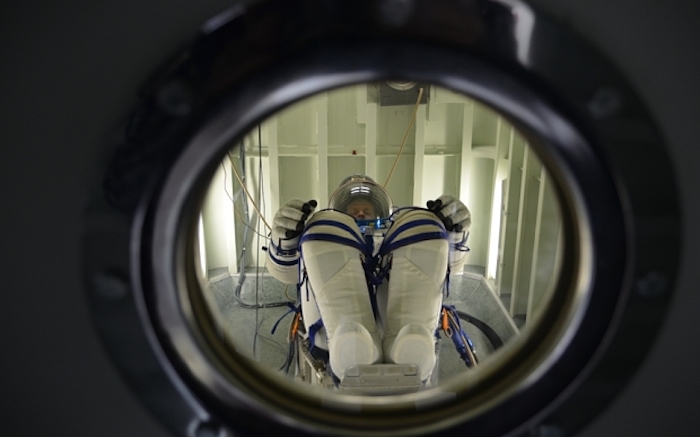
He will be launched from Russia’s Baikonur cosmodrome in Kazakhstan in December 2015. His flight was due to leave in November but was put back after the Russians lost control of one of their rockets during a supply trip to the USS.
Major Peake believes the mission will help catapult Britain to the centre of space research.
“It’s wonderful that the UK has decided to invest in human spaceflight,” he said. “Hopefully I will be the first of many Britons. Hopefully we will soon have the first British astronaut on the Moon.
“The feeling when I first look out the window and see Earth will be incredible. It will be one of the most amazing experiences of my life. But there are so many things going on up there which will be astonishing.
“One thing I am most looking forward to is using the robotic arm to bring in the supply modules which is quite a tricky procedure. I also might get to do a spacewalk which would be a highlight.”
.

Major Tim Peake says he would love to do a spacewalk on the mission
He is convinced that humans will get to Mars by the 2030s but said he is likely to hang up his flightsuit before then.
“I think mid-2030s is ambitious for Mars but if we get really focussed we just might do it,” he said.
“At the moment we have got Nasa and the European Space Agency pulling in slightly different directions. Nasa is trying to get to an asteroid, and Europe is trying to get back to the Moon. So we need to get more joined up.
“I think in terms of human physiology we are ready to go Mars but we need to come up with some radiation protection.
“I’ll be too old for a Mars mission by then time we go though. And I have two young children which take up a lot of my energy. It’s harder bringing up two boys than being as astronaut.”
Major Peake currently lives with his wife Rebecca and two children Thomas, six, and Oliver, three, in Houston.
Quelle: The Telegraph
-
Update: 24.10.2015
.
The final countdown: British space pioneer ready for blast-off
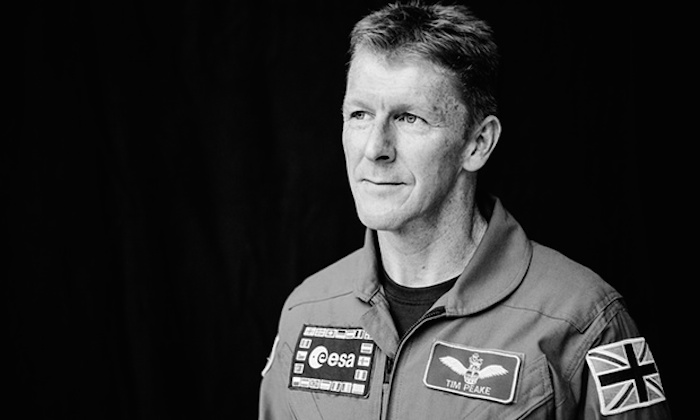
British astronaut Tim Peake at European Astronaut Centre Cologne. Peake is part of the Principia mission, due to launch into space on 15 December.
-
Hanging on the wall above model rockets and space capsules in the atrium of the European Astronaut Centre in Cologne is a screen showing a timetable of the day’s events. The hall is busy with payload training. Chinese class is underway. After lunch is a lecture on astronaut protective socks. The last event, at 5.30pm, is “Tim’s farewell”.
The send-off is for Tim Peake, a 43-year-old army major and former helicopter test pilot, who in 2009 was chosen to be Britain’s first European Space Agency (ESA) astronaut. After this week, the staff here will not see him again until May 2016. By then, Peake will have blasted into space, lapped the planet more than 2,700 times, and fallen through the atmosphere in a fireball.
Launch day is less than two months away. On 15 December, Peake and two crewmates will be in Baikonur, Kazakhstan, to board a capsule on a Soyuz FG rocket, a machine that converts 270 tonnes of propellant into speed to catch up with the International Space Station (ISS) that flies 250 miles overhead at 17,500mph. He will not return for five months.
“I think the time will fly by. I’m glad it’s not any shorter. There’s so much I want to try and achieve in that time in space,” said Peake during a break in an otherwise formidable training regime. “The thing I’m most afraid of is something happening between now and launch and not actually making it into space.”
In the six years since Peake joined the astronaut corps, he has trained in Germany, Japan, Canada, Russia and the US. He has lived underground in a Sardinian cave system, and underwater in a habitat off the Florida coast, an exercise that simulated aspects of visiting an asteroid.
You have one shot to get yourself back safely. A couple of times I didn’t make it back, and then I got to grips with how this thing flew
During his mission, named Principia after Isaac Newton’s 17th-century tome, Peake hopes to be called on to do a spacewalk. He trained in diving gear in the huge swimming pool at Nasa’s astronaut centre in Houston, and in a virtual reality environment that recreates - with stomach churning realism - the sensation of working outside the ISS. The instructors make you tumble off now and then to see if you survive. To get back on, you have to orientate yourself and fire your jetpack. It is not as easy as George Clooney makes it look in Gravity.
Advertisement
“It’s a very difficult task, but I love it as a pilot because it requires a lot of coordination and you have minimum fuel. You have one shot to get yourself back safely,” Peake said. “A couple of times I didn’t make it back, and then I got to grips with how this thing flew, and since then, touch wood, I’ve been ok.”
Peake is a fan of the recent run of space movies from Hollywood, and tries not to pull them apart on grounds of scientific accuracy. Gravity had “wonderful cinematography”, and he loved Interstellar. That a director even tried to take on gravitational time dilation and reality beyond the event horizon of a black hole was impressive, he said. “If they get people excited about space and space exploration then I’m all for it.”
He describes his latest job as less dangerous than those he has done before. He left Sandhurst at the age of 20 to command a 30-man platoon of Royal Green Jackets in Northern Ireland. As an army helicopter pilot, he did tours in Bosnia and Afghanistan. Some of his most memorable flying was in the hills of Bosnia, where he flew reconnaissance missions at night and during the winter. The terrain was mined, so landing was a careful process, and he encountered sporadic gunfire. “We had nothing to return fire with, so we’d do evasive manoeuvres and get out of there,” he said.
Peake went on to become a helicopter instructor pilot and a test pilot at Boscombe Down. In an exchange trip to the US, he flew Apache helicopters and on his return, helped introduce them to the British army. On one test flight in Arizona, Peake was flying the Apache faster and higher than it had flown before, an exercise called envelope expansion. The flight was beset by abnormal vibrations that could have spelt disaster. “Sometimes you only realise you are in a dangerous situation after it has happened,” he said. “The investigation showed that our tail rotor had been banging metal on metal, and drilling a hole through the tail rotor gradually, so we were glad we knocked that sortie on the head when we did.”
More than 8,000 people applied to be astronauts when ESA advertised in 2008. At the time, the UK was not interested in human spaceflight, and no funding for the programme meant no British ESA astronauts. Peake will not be the first Briton in space, though. Helen Sharman, a chemist from Sheffield, took a privately-funded trip to the Mir space station in 1991. Others, including Michael Foale, Nicholas Patrick and Piers Sellers, had, or took, US citizenship and qualified as Nasa astronauts.
Quelle: theguardian
-
Update: 9.11.2015
.
Tim Peake displays the 'Right Stuff' for astronauts in 2015
When Tim Peake blasts off for the International Space Station on 15 December, the first British astronaut since Helen Sharman in 1991 will be flying more flags than just the Union Jack. Aviators of all nations will see, roaring to orbit, affirmation of their very own version of the "Right Stuff".
Because British army Major Peake, like so many astronauts past and present, is – perhaps first and foremost – a flyer; helicopters in his case, since 1994 including as an instructor and test pilot.
Yuri Gagarin and America’s original Mercury contingent were elite military flyers. Neil Armstrong was among the first to fight in jets, in Korea, before tackling the Bell X-15. This month, NASA put out a fresh call for applications from aspiring astronauts, specifying that “candidates... must have at least three years of related, progressively responsible professional experience, or at least 1,000h of pilot-in-command time in jet aircraft”.
But is this emphasis on pilots really necessary? Rockets and aircraft are very different beasts, and the space station doesn’t have a cockpit. True, says Peake, who describes his route to the astronaut corps as “traditional” and emphasises that among his colleagues are many scientists and engineers with very different career paths.
Speaking to the press at London’s Science Museum on 6 November before heading to Kazakhstan and final preparations for his six-month “Principia” mission, Peake says pilot skills underpin much of an astronaut’s work. Pilots, he says, are long on valuable skills in operational environments, crew working, co-ordinating multiple tasks and communications.
Also, work in space calls on the skills that come naturally to pilots when it involves operating complex equipment, such as the ISS’s robotic arm, or the often-experimental equipment that is evaluated in space.
In any case, he notes, the next generation of US spacecraft – the Boeing CST-100 and SpaceX Dragon capsules being developed for flight from 2017 as part of NASA’s Commercial Crew programme – will need pilots at the controls.
Fit, charming, outgoing and graciously fielding any pre-launch question pitched at him by an eager UK press corps, Peake looks every inch the astronaut. But however deeply he may be infused with the “Right Stuff”, he is very clear about one thing. The ISS is, above all, a laboratory uniquely placed to carry out medical, physical and chemical science experiments that can only be conducted in the unique environment that is microgravity.
Indeed, Peake’s mission has been named “Principia”, as in Isaac Newton's “Philosophiæ Naturalis Principia Mathematica”; the mission logo features a falling apple and rising rocket. In the UK, the mission is, as universities and science minister Jo Johnson told the Science Museum crowd, the country’s “moonshot moment” for turning on young people to the so-called STEM subjects: science, technology, engineering, mathematics. Linked to Peake’s mission, the government is spending £1.5 million ($2.3 million) to push that message to every school in the land, with the help of 1,000 “science ambassadors” and projects tied to Principia.
Peake himself also took the opportunity to announce that he has become an ambassador for the Prince's Trust, the charity started by Prince Charles to bring opportunity to disadvantaged young people. Peake readily admits that he is where he is because of many advantages – much skill, hard work and a huge dollop of good luck along with way. As a legacy he wants to help every young person in Britain enjoy the same.
Flying, then, is a useful if not indispensable skill. But today’s astronaut, it seems, is first and foremost a scientist and a communicator.
.
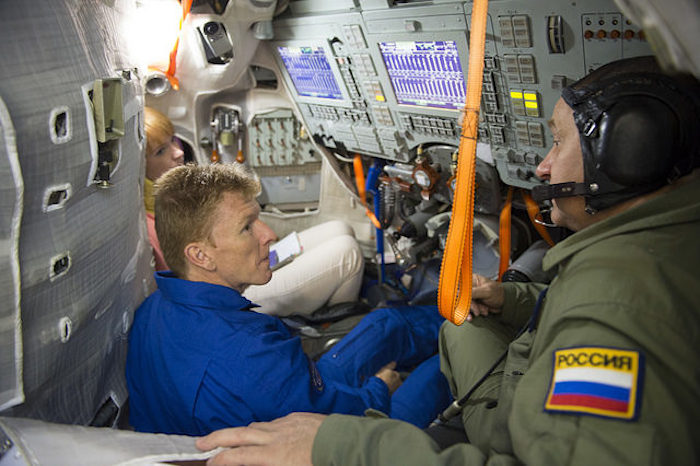
Tim Peake training Star City
Quelle: Flightglobal
-
Update: 24.11.2015
.
Tim Peake 'ready' for flight to International Space Station
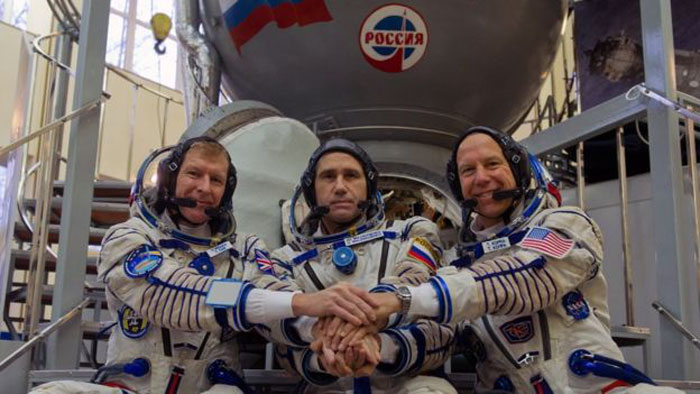
Mr Peake (left) will travel alongside Russian cosmonaut Yuri Malenchenko (centre) and US astronaut Tim Kopra (right)
.
British astronaut Tim Peake says he's "definitely ready" for his first space flight, finally fulfilling a childhood ambition after two and a half years of intensive training.
The former military test-pilot has just passed his final practical exams and is due to blast off to the International Space Station on 15 December.
Along with Russian commander Yuri Malenchenko and Nasa astronaut Tim Kopra, he will spend 170 days in orbit, conducting scientific experiments and carrying out maintenance work on the vast flying laboratory.
"The launch, re-entry, the whole experience of being in weightlessness, if I get the opportunity to do a spacewalk - these are all absolute highlights of the mission," Mr Peake told the BBC at a Russian facility deep in a snowy forest on the edge of Moscow. It's where Yuri Gagarin also trained over half a century ago to be the first man in space.
Mr Peake will be the first British astronaut on the ISS, flying from the European Space Agency. Since the US space shuttle programme was ended, the Russian spacecraft has been the only way up.
So last week, the main three-man crew and their back-up team were put through two days of gruelling practical tests, including several hours squeezed inside a replica of the Soyuz capsule they'll travel in.
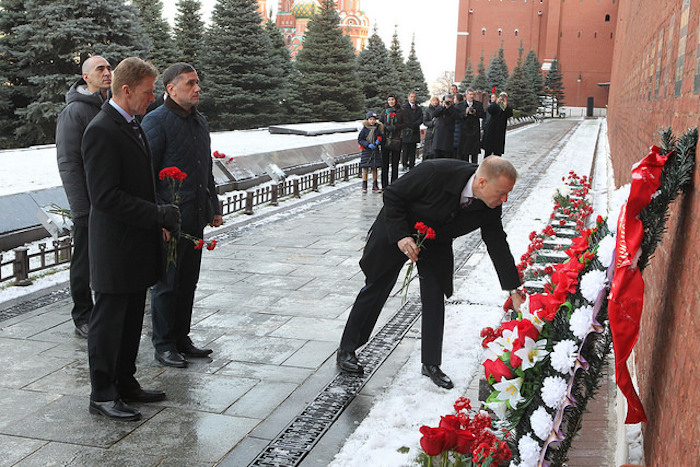
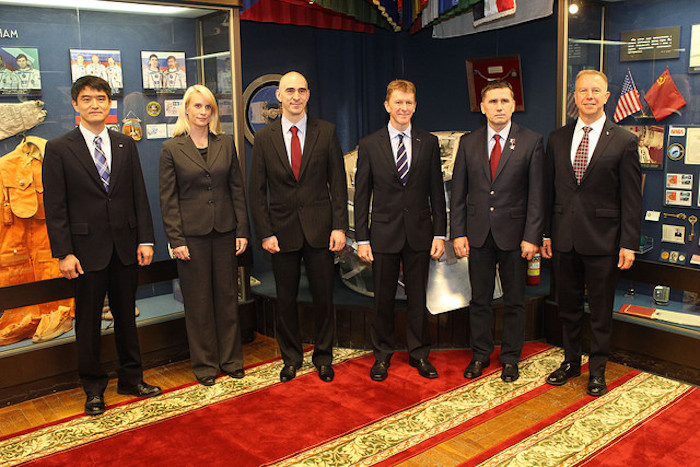
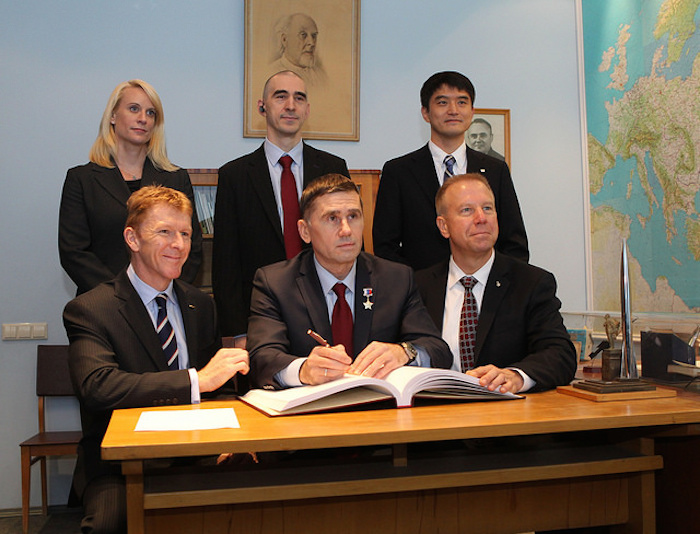
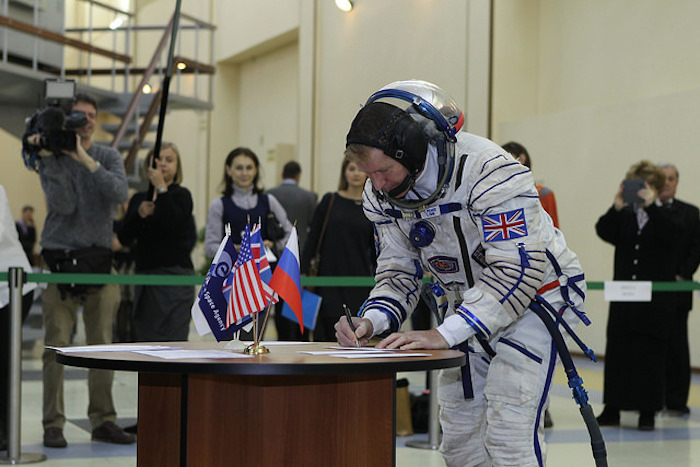

Fully kitted-out in their space suits, the astronauts flew a simulation of the six-hour journey, tackling multiple malfunctions on their way.
"There are emergency drills to see how to act to save themselves and the spacecraft," trainer Georgy Pirogov explained, keeping an eye on the crew via a bank of video screens in a mini mission control.
"It could be a fire, loss of pressure or an emergency landing," he said. "But in reality, most of it is automatic and ideally they should just sit and fly!"
The intense training programme has included living in a cave and deep under the sea. Yet of all things, Tim Peake says that it is learning Russian that has been "a struggle".
Now fully qualified, he says he has "no worries whatsoever" about his first ever spaceflight.
"Flown astronauts have given me lots of advice," he says, equating the experience to learning to dive or to ski.
He says there are plenty of mishaps as you adjust to a life in zero gravity, where you have to tether yourself to the wall to sleep, and to the toilet.
"After about two weeks they say you get into a pattern - how to eat, wash, use the loo - all the normal things we take for granted in our 1G [gravity] environment," he has been assured.
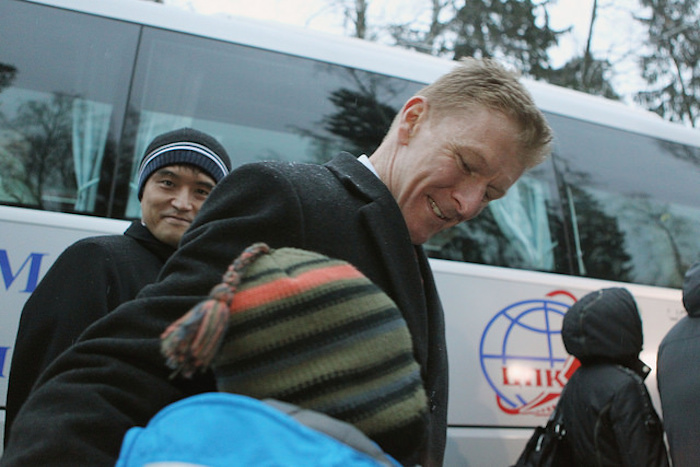
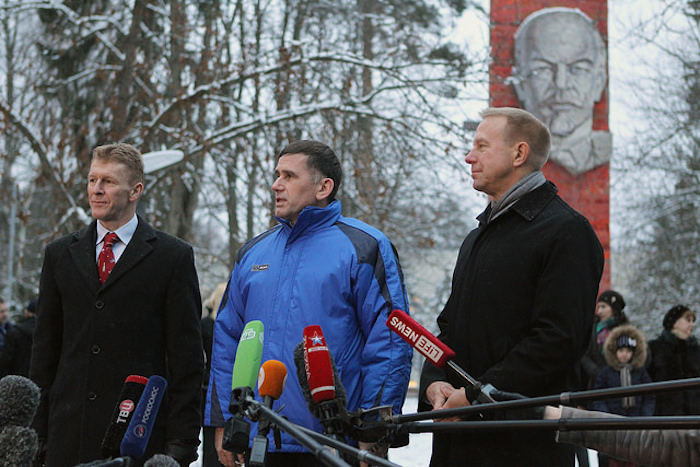
The crew will undertake a full scientific programme on the ISS, conducting more than 250 experiments over their six-month mission - many on their own bodies. They include research on the human immune system and the ageing process.
Some of the crew's baggage allowance will be taken up by that research kit. But as well as family photographs, Tim Peake says he'll be taking some personal items to be "flown in space", that he plans to give to his sons when they turn 18.
And on the advice of former astronauts, he'll also make space for one vital item: sticky-tape.
"They say if you leave anything, you turn around and it won't be there," he laughed, recalling the top tip for life 400km (248 miles) above Earth.
The final "graduation" ceremony at Star City takes place next week, attended by the astronauts' families. Then it's into the obligatory quarantine, ahead of the launch.
"The whole experience is a huge privilege," the British spaceman reflects, unruffled as ever. "But seeing that first view of planet Earth from space is probably going to be the most exciting moment."
Quelle: BBC
-
Update: 30.11.2015
.
Tim Peake in Moskau

At the Gagarin Cosmonaut Training Center in Star City, Russia, Expedition 46-47 crewmember Tim Peake of the European Space Agency prepares to depart for his launch site at the Baikonur Cosmodrome in Kazakhstan Nov. 30 as backup crewmember Takuya Onishi of the Japan Aerospace Exploration Agency (JAXA) looks on. Peake, Tim Kopra of NASA and Yuri Malenchenko of the Russian Federal Space Agency (Roscosmos) will launch Dec. 15 in the Soyuz TMA-19M spacecraft for a six-month mission on the International Space Station.
NASA / Seth Marcantel
-


At the Kremlin Wall in Red Square in Moscow, Expedition 46-47 crewmember Tim Kopra of NASA lays flowers at the site where Russian space icons are interred in a ceremony Nov. 23. Looking on from left to right are backup crewmember Anatoly Ivanishin of the Russian Federal Space Agency (Roscosmos) and prime crewmembers Tim Peake of the European Space Agency and Yuri Malenchenko of Roscosmos. Peake, Malenchenko and Kopra will launch on Dec. 15 on the Soyuz TMA-19M spacecraft from the Baikonur Cosmodrome in Kazakhstan for a six-month mission on the International Space Station.
NASA/Seth Marcantel

At the Gagarin Cosmonaut Training Center in Star City, Russia, the Expedition 46-47 prime and backup crewmembers pose for pictures Nov. 23 at the Gagarin Museum. From left to right are backup crewmembers Takuya Onishi of the Japan Aerospace Exploration Agency, Kate Rubins of NASA and Anatoly Ivanishin of the Russian Federal Space Agency (Roscosmos) and prime crewmembers Tim Peake of the European Space Agency, Yuri Malenchenko of the Russian Federal Space Agency (Roscosmos) and Tim Kopra of NASA, who will launch on Dec. 15 on the Soyuz TMA-19M spacecraft from the Baikonur Cosmodrome in Kazakhstan for a six-month mission on the International Space Station.
NASA/Seth Marcantel

At the Gagarin Cosmonaut Training Center in Star City, Russia, the Expedition 46-47 prime and backup crewmembers pose for pictures Nov. 23 during a photo opportunity in which they signed a ceremonial book at the Gagarin Museum. In the front row are the prime crewmembers, Tim Peake of the European Space Agency (left), Yuri Malenchenko of the Russian Federal Space Agency (Roscosmos, center) and Tim Kopra of NASA (right). In the back row are backup crewmembers Kate Rubins of NASA, Anatoly Ivanishin of Roscosmos and Takuya Onishi of the Japan Aerospace Exploration Agency. Peake, Kopra and Malenchenko will launch on Dec. 15 on the Soyuz TMA-19M spacecraft from the Baikonur Cosmodrome in Kazakhstan for a six-month mission on the International Space Station.
NASA/Seth Marcantel

At the Gagarin Cosmonaut Training Center in Star City, Russia, Expedition 46-47 crewmember Tim Peake of the European Space Agency signs in for his qualification exam Nov. 20. Along with Yuri Malenchenko of the Russian Federal Space Agency (Roscosmos) and
JSC2015E102937 (11/20/2015) --- At the Gagarin Cosmonaut Training Center in Star City, Russia, Expedition 46-47 crewmember Tim Peake of the European Space Agency signs in for his qualification exam Nov. 20. Along with Yuri Malenchenko of the Russian Federal Space Agency (Roscosmos) and Tim Kopra of NASA, Peake will launch Dec. 15 on the Soyuz TMA-19M spacecraft Dec. 15 from the Baikonur Cosmodrome in Kazakhstan for a six-month mission on the International Space Station. NASA/Seth Marcantel
Quelle: NASA
-
Update: 2.12.2015
.
Aliens, horses and nerves: Tim Peake answers pupils' questions about his space mission
Ahead of blast off later this month, we secured a few minutes with astronaut Tim Peake to ask him your students’ questions. Here are his answers

The countdown has begun for Tim Peake’s exciting voyage into space. On 15 December the British astronaut will blast off to the International Space Station, not to return until May 2016. During his time away from Earth he will carry out scientific experiments and be eligible for spacewalks.
But before he embarks on his mission, we got a chance to ask him your students’ questions. The vast variety we received ranged from the sublime (“Why did you want to be an astronaut?”) to the ridiculous (“Can you ride a horse in space?”). Here’s what he said in reply:
What would be the most useful Christmas present you could get in space?
I will be able to answer that on Christmas Day because that’s when I will realise what I miss the most. I hope that everything I need will be in space with me, but there will obviously be a few items I will forget to take. The most useful present would be something that connects me back to planet Earth and my friends and family there – so something that reminds me of Christmas: a cracker, a hat or some food.
Where will you sleep during your mission?
In the space station we have six crew quarters, four of them are in the US Orbital Segment (USOS) and I will be sleeping in there. I will be sleeping in the deck quarter. Of course it doesn’t matter what orientation you sleep in space – there’s no up and down.
Will you sleep for the same number of hours?
Yes, we try and get eight to 11 hours rest every night. It’s important to remain well-rested because we have to follow a very punishing work schedule. You’ve also always got to have some energy left in reserve if there’s an emergency.
How many calories do you consume daily in space?
It depends on the individual, and we try and tailor our diet to suit certain needs, but anywhere from 2,500-3,500 calories. I am not sure what the amount would be for women but I’ve been advised to take in this number. I think calorie intake is slightly higher because we’re working extremely hard up there and even though we’re not in an environment where there’s gravity we’re still moving mass around and our muscles are still being exercised. And to keep in shape we have to exercise for two hours every day, which will expend a lot of energy.
Which planet would you most like to go to and why?
Other than planet Earth – which is my favourite planet in the solar system – I would like to go to Mars. I think it’s fascinating; it’s quite closely related to Earth in being one of the small, rocky planets that probably once had an atmosphere and once had oceans on it. I think the more we can learn about that planet the more interesting it will be.
Why did you want to be an astronaut?
I’ve carried a sense of exploration and adventure with me throughout my life. It was a very natural move to go from being a test pilot to an astronaut. There are lots of similarities between the two jobs in terms of evaluating pieces of equipment. As a test pilot I was evaluating the pure flying qualities of the aircraft or systems – such as lighting systems for a cockpit, or sighting systems, or underslung loads. Space flight is really one huge developmental test programme; everything we have on board is being developed and evaluated. What’s expected on a day-to-day basis is similar to what is expected of a test pilot.
What does food taste like in space?
I am not sure yet but I have heard that your sense of taste becomes a little bit impaired. There are all sorts of theories about that, maybe it’s because of the air circulation. We get a lot of taste from smell and in space your sense of smell is not so strong because there’s no convection in the air. So I’ve heard astronauts like to spice up their food a little bit with tabasco or some other hot sauce.
Could you take a horse into space and, if so, could you ride it?
No reason why you couldn’t. In terms of the payload, we’ve taken bigger things than horses into space. We have pressurised compartments with life support systems that could do it. In terms of riding it, you could strap yourself onto the back of a horse but you’d both be floating in space, obviously.

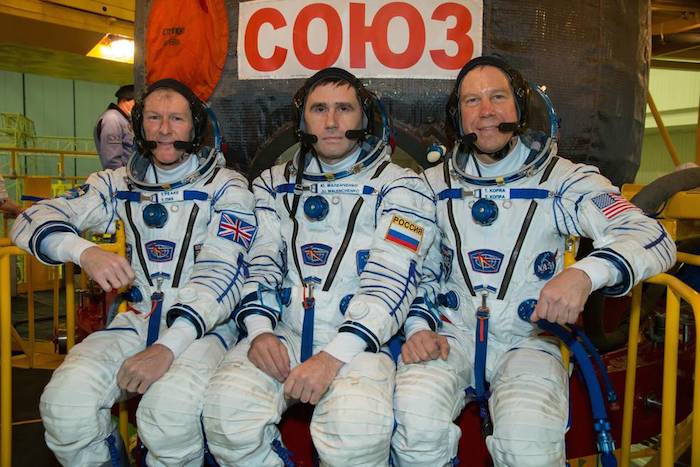
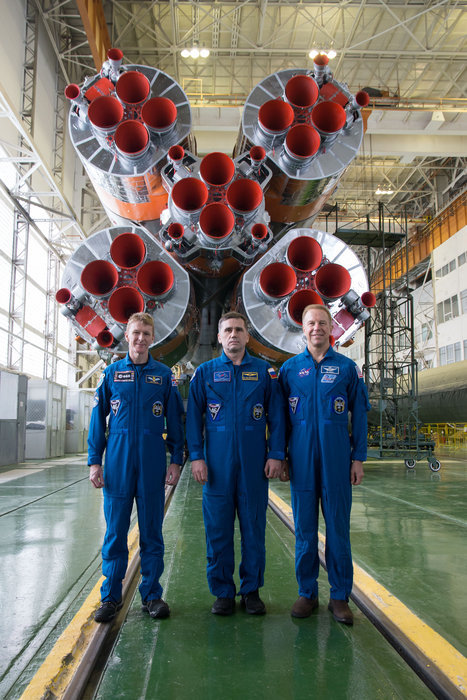
How will you clean your teeth in space?
Cleaning your teeth is probably one of the easier hygiene operations. You dampen your toothbrush with a little bit of water and then brush your teeth and rather than spitting it out, you just swill out your mouth and swallow it.
Are you nervous about going into space?
I was a test pilot for 18 years and as a test pilot you experience more risks on a day-to-day basis than going into space. Launch and landing are probably the highest risk areas, and yes there will be moments of apprehension, of course. But one of the great things about the training is that it prepares you so well for all eventualities – you almost expect something to happen. I’ve not been in a simulation yet where we haven’t had a catastrophic failure at some level. If I manage to get to the space station without a failure of some kind it will be a first so I think the training prepares you very well.
Do you believe in aliens?
That depends on your definition of aliens. I definitely believe in life on other planets, and I think we might be close to discovering microbial single-cell life forms either currently in existence or evidence of their past existence on Mars, for example. We are always searching for organic compounds and the potential for life on other planets so, yes, I believe in life on other planets – but not in the form of little green men living in our solar system.
Quelle: theguardian
.
Update: 5.12.2015
.
Rocket man: the astronaut who plans to run the marathon in space
Next April, Briton Tim Peake will run the London marathon in space – on the International Space Station – at the same time as the real race on earth. He explains the challenges he faces – and the virtual course he will follow
What happens when you hit the wall in space? This is not a daft question from a
sci-fi novel, but a real possibility that the British astronaut Tim Peake might have to consider. Peake, who is due to blast off for the International Space Station on 15 December, is aiming to become the first man to run a marathon in space. At 10am on 24 April next year, he will line up alongside 37,000 other runners for the start of the most famous marathon in the world: London’s. He will just happen to be about 400km above them when he does it.
Peake is no marathon novice – in 1999, back down on earth, he finished the London course in 3h 18min 50sec – and though he is not expecting to beat that time in space, he has been training hard already. “As soon as I got assigned to my mission, I thought: wouldn’t it be great to run onboard the ISS,” he says. “The London Marathon is a worldwide event. Let’s take it out of this world!”
Running 26.2 miles is tough for anybody, but the additional demands of doing it in microgravity creates unique difficulties. “One of the biggest challenges I’ll be facing is the harness system,” he explains. “It has a waistbelt and shoulder straps. That has to provide quite a bit of downforce to get my body on to the treadmill, so after about 40 minutes, that gets very uncomfortable. I don’t think I’ll be setting any personal bests. I’ve set myself a goal of anywhere between 3:30 to 4 hours.”
While this feat may represent rather a lot of small steps for mankind (after all, 42,195 metres make up a marathon), 26.2 miles of giant leaps have already been taken by a woman – back in 2007, Nasa astronaut Sunita Williams ran the Boston marathon on a treadmill up on the ISS. But what makes Peake’s attempt different is that he will be running virtually through the streets of London, while orbiting miles above them.
.

Peake takes a break from training. Photograph: Bob Martin for Virgin Money London Marathon
This is thanks to a very clever app called RunSocial. The company behind it film running courses – including the Prague and London marathon routes – and create “mixed reality” videos that runners can watch while on the treadmill. The video playback matches their speed, creating a very smooth and convincing effect of moving through the landscape. If the treadmill slows, the video slows, and vice versa. So, just like runners on the physical streets, Peake will be moving past the famous landmarks of the course – the Cutty Sark, Tower Bridge, and possibly hitting the wall on that last, will-sapping stretch along the Embankment.
“The thing I’m most looking forward to is that I can still interact with everybody down on Earth,” says Peake. And anyone who wants to join him can do so – everyone using RunSocial has an avatar that reflects their real place on the course, so fellow virtual runners on the day can overtake, be passed by or run alongside the astronaut for some pacemaking help. Peake’s own avatar will help identify him – he has been given his very own virtual European Space Agency flight suit.
The app itself is free and the download of the marathon route costs £4.99, but every single person who applied for a place in the marathon ballot – successfully or not – will be sent a link for a free download in January 2016. And come April, the words everyone will be hoping not to hear will be: “London ... we have a problem.”
Quelle: theguardian
-
Update: 8.12.2015
.
NASA Television Coverage Set for Next Space Station Crew Launch

In the Integration Facility at the Baikonur Cosmodrome in Kazakhstan, Expedition 46-47 crewmembers Tim Peake of the European Space Agency (left), Yuri Malenchenko of the Russian Federal Space Agency (Roscosmos, center) and Tim Kopra of NASA (right) pose for photos Dec. 1 in front of their Soyuz TMA-19M spacecraft during a crew fit check. The trio will launch Dec. 15 from Baikonur for a six-month mission on the International Space Station.
Credits: NASA/Victor Zelentsov
-
The next three crew members bound for the International Space Station are set to launch on Tuesday, Dec. 15. NASA Television will provide full coverage of the launch beginning at 5 a.m. EST.
Astronauts Tim Kopra of NASA and Tim Peake of ESA (European Space Agency), and cosmonaut Yuri Malenchenko of the Russian Federal Space Agency (Roscosmos) will launch from the Baikonur Cosmodrome in Kazakhstan at 6:03 a.m. (5:03 p.m. Baikonur time) for a six-month stay on the orbital complex.
The three will travel in a Soyuz spacecraft, rendezvous with the space station and dock to the Rassvet module at 12:24 p.m. NASA TV coverage of docking will begin at 11:45 a.m.
The hatches between the Soyuz and space station will be opened at about 2:25 p.m., and the newly arrived crew members will be greeted by Expedition 46 Commander Scott Kelly of NASA and Flight Engineers Sergey Volkov and Mikhail Kornienko of Roscosmos. NASA TV coverage of the hatch opening will begin at 2 p.m.
Kelly and Kornienko will return in March 2016 with Volkov after spending a year on the station collecting valuable biomedical data that will improve our understanding of the effects of long duration space travel and aid in NASA’s journey to Mars.
Together, the Expedition 46 crew members will continue the several hundred experiments in biology, biotechnology, physical science and Earth science currently underway and scheduled to take place aboard humanity’s only orbiting laboratory.
Quelle: NASA
.
Update: 11.12.2015
.
Can´t stop me now: Tim set for Principia launch

ESA astronaut Tim Peake, NASA astronaut Tim Kopra and cosmonaut commander Yuri Malenchenko will leave our planet for the International Space Station 15 December at 11:03 GMT, marking the start of Tim Peake’s Principia mission.
Their Soyuz TMA-19M spacecraft will be rolled to the pad in the Baikonur Cosmodrome, Kazakhstan, by train from its assembly building two days before launch. Lift off will be from pad 1, the same one used by Sputnik, the first satellite, and Yuri Gagarin, the first human in space.
Today, the trio visited their spacecraft for the second and last time before launch. The next time they see their van-sized vehicle it will be sitting 40 m up on 274 tonnes of rocket fuel.
On launch day Tim, Tim and Yuri will suit up four hours before their afternoon ascent. They will enter their craft at around 08:33 GMT.
Delivering 26 million horse-power, their Soyuz rocket will carry them 1640 km downrange and lift them 210 km above our planet in 10 minutes.
The trip to the Space Station should take only six hours, orbiting Earth four times as they catch up with the outpost flying at 28 800 km/h. The trio have a backup itinerary of two days that mission controllers can call on if necessary.
The spacecraft will dock with the Earth-facing port of the Russian Rassvet module at around 17:23 GMT. Astronauts on both sides will ensure there are no leaks before opening the hatches around 90 minutes later.
The new arrivals will float to the Russian Zvezda module to talk to their family and friends on Earth in a public event. They will also enjoy their first meal in space – it will have been 12 hours since setting off in Baikonur on their voyage.
It is a busy time at the orbiting research complex: the US Cygnus supply vessel was berthed yesterday and three astronauts return to Earth on 11 December.
Watch the Principia launch, docking and press conference live on the ESA website. A more detailed timeline is available on ESA’s Principia blog. Follow Tim Peake and his Principia mission via timpeake.esa.int
Quelle: ESA
5748 Views

